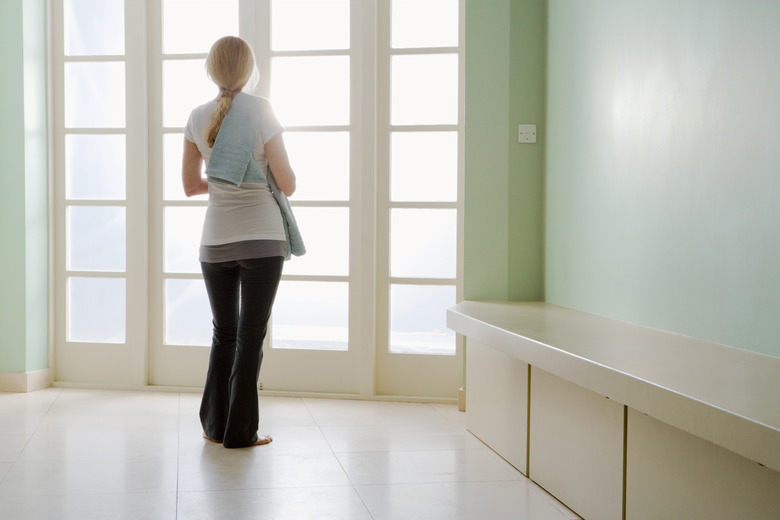Pros & Cons Of Solar Film For Home Windows
Solar window film, also known as solar control window film, can save money, improve indoor comfort and protect your furniture from sun damage — but it can also cause problems. Solar films are thin plastic or polymer layers applied to your existing windows to help control light or heat. The newest solar film advancements have managed to rectify some of the old issues, but consumers should still use caution when deciding on the right film.
Uses
Uses
Solar window films were designed to control problems, mostly excess heat and fading from ultraviolet light exposure, caused by direct sunlight through home or office windows. These films are considered "retrofit" products that alter existing after-market windows and circumvent the need for new, upgraded window units. Window films provide the best return-on-investment in existing buildings in warm climates, especially high-rise buildings or homes with single-paned glass, according to the International Window Film Association.
Pros
Pros
Polyester films can absorb and reradiate long-wave infrared heat, improving heat retention in the winter and lowering energy costs. Others reflect heat to the outside, minimizing summer heat — reducing central air conditioning bills and prolonging the life of heating, ventilation and air conditioning units. The same films can reduce glare and block up to 99 percent of harmful UV radiation from entering a home or office. The newest solar films have the capacity to be clear instead of tinted and can block out as much as 55 percent of summer heat while retaining heat in winter.
Cons
Cons
Some films may not provide the advertised benefits or may begin to peel after a few years — though a quality film, professionally installed, may last 12 to 22 years. A film with a dark tint may significantly affect the view for people inside the house, while a film with a shiny outer coat can give windows a dark or shiny external appearance — or make the glass appear colored due to reflection of some bands of visible light. Many homeowners associations prohibit such alterations in appearance. In addition, the application of window film voids some manufacturers' warranties on windows, so check the details of any existing warranties before applying window film.
Considerations
Considerations
Choose a film that has been tested and certified by an independent third party. Third-party testing verifies that films meet health and safety standards — like fire safety, glass fragment protection and human impact safety — as well as energy performance standards. The National Fenestration Rating Council has certified more than 250 films for energy efficiency.
Before you buy, make sure you have the right film for your climate. Look through the product materials for the film's visible transmittance, or VT. Now check the solar heat gain coefficient, or SHGC. If the VT value is greater the SHGC, the film is best for hot climates. The reverse is true for cold climates.
You'll also want to know the light-to-solar-gain ratio for your film. If you live in a hot climate and want to keep heat out, look for a high ratio — at or above 1, meaning the glass transmits more light than heat. The reverse is true for indoor environments that require darkness or heat retention.
Cite This Article
MLA
Maclin, Ellie. "Pros & Cons Of Solar Film For Home Windows" sciencing.com, https://www.sciencing.com/pros-cons-solar-film-home-windows-22817/. 24 April 2017.
APA
Maclin, Ellie. (2017, April 24). Pros & Cons Of Solar Film For Home Windows. sciencing.com. Retrieved from https://www.sciencing.com/pros-cons-solar-film-home-windows-22817/
Chicago
Maclin, Ellie. Pros & Cons Of Solar Film For Home Windows last modified March 24, 2022. https://www.sciencing.com/pros-cons-solar-film-home-windows-22817/
